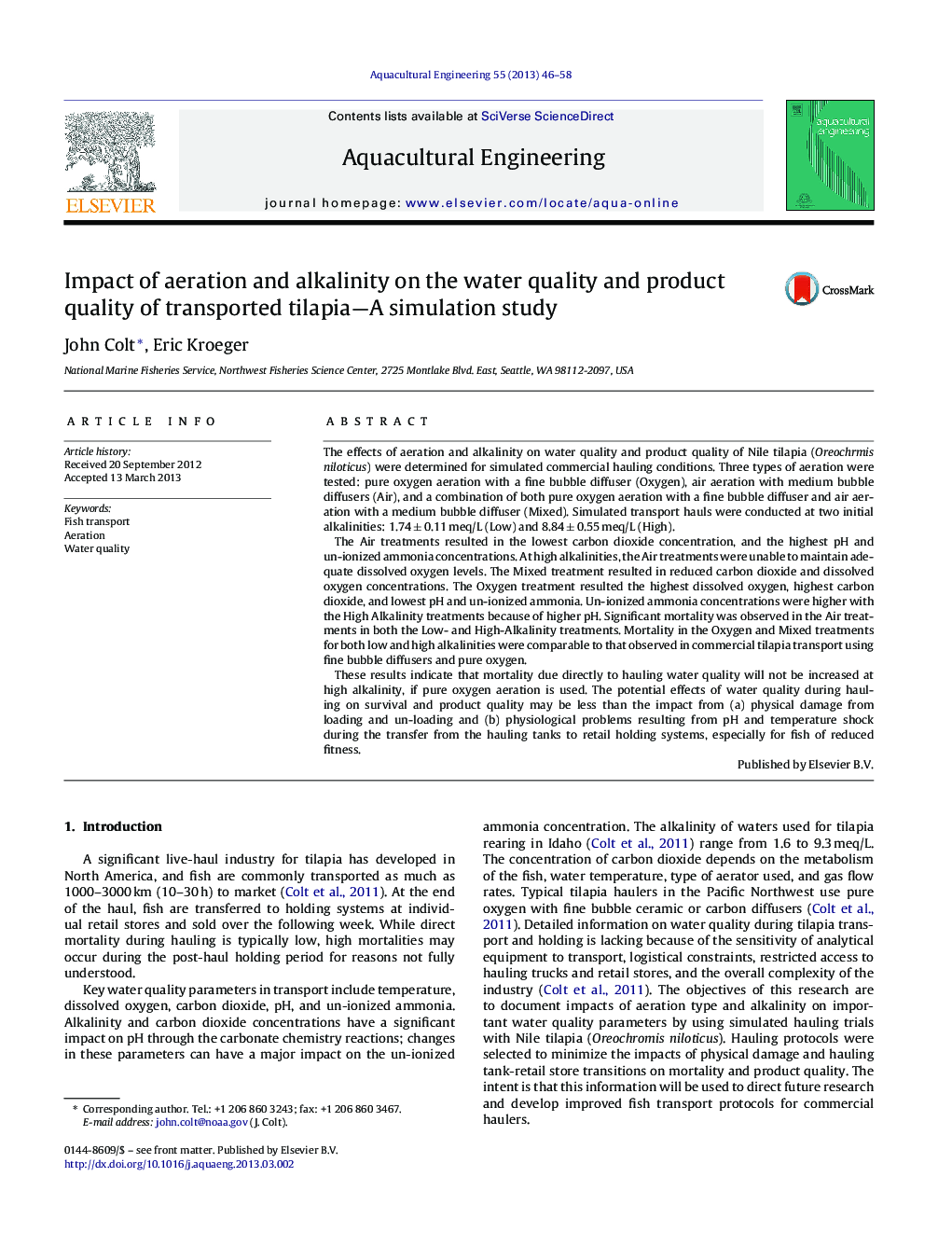| Article ID | Journal | Published Year | Pages | File Type |
|---|---|---|---|---|
| 4527196 | Aquacultural Engineering | 2013 | 13 Pages |
•Air aeration resulted in lowest CO2, highest pH, and highest NH3 concentrations.•At high alkalinities, the “Air” treatment was unable to maintain adequate DO levels.•Oxygen aeration resulted the highest DO, highest CO2, lowest pH, and lowest NH3.•NH3 was higher in the “High Alkalinity” treatments because of higher pH.•Increased mortality was observed in the air aeration treatments.
The effects of aeration and alkalinity on water quality and product quality of Nile tilapia (Oreochrmis niloticus) were determined for simulated commercial hauling conditions. Three types of aeration were tested: pure oxygen aeration with a fine bubble diffuser (Oxygen), air aeration with medium bubble diffusers (Air), and a combination of both pure oxygen aeration with a fine bubble diffuser and air aeration with a medium bubble diffuser (Mixed). Simulated transport hauls were conducted at two initial alkalinities: 1.74 ± 0.11 meq/L (Low) and 8.84 ± 0.55 meq/L (High).The Air treatments resulted in the lowest carbon dioxide concentration, and the highest pH and un-ionized ammonia concentrations. At high alkalinities, the Air treatments were unable to maintain adequate dissolved oxygen levels. The Mixed treatment resulted in reduced carbon dioxide and dissolved oxygen concentrations. The Oxygen treatment resulted the highest dissolved oxygen, highest carbon dioxide, and lowest pH and un-ionized ammonia. Un-ionized ammonia concentrations were higher with the High Alkalinity treatments because of higher pH. Significant mortality was observed in the Air treatments in both the Low- and High-Alkalinity treatments. Mortality in the Oxygen and Mixed treatments for both low and high alkalinities were comparable to that observed in commercial tilapia transport using fine bubble diffusers and pure oxygen.These results indicate that mortality due directly to hauling water quality will not be increased at high alkalinity, if pure oxygen aeration is used. The potential effects of water quality during hauling on survival and product quality may be less than the impact from (a) physical damage from loading and un-loading and (b) physiological problems resulting from pH and temperature shock during the transfer from the hauling tanks to retail holding systems, especially for fish of reduced fitness.
